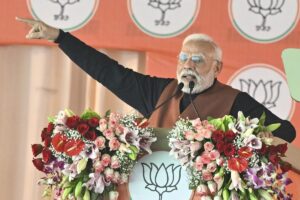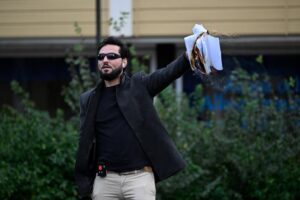How RSS Resurgence Powered BJP’s Historic 3rd Term in Haryana

BJP has won a historic third consecutive term in Haryana.
The Bharatiya Janata Party (BJP) has won a historic third consecutive term in Haryana, thanks to the revitalizing efforts of the Rashtriya Swayamsevak Sangh (RSS). This victory follows a difficult period for the party, marked by the loss of five Lok Sabha seats and declining voter support, especially after the 2020-2021 farmers’ protests.
An internal RSS survey in August revealed that Haryana’s BJP government, led by Chief Minister Manohar Lal Khattar, was losing its appeal. The survey called for a leadership change and a shift in strategy. Recognizing the urgency, the BJP turned to the RSS to help rebuild its rural base and reinvigorate its grassroots organization.
A crucial meeting on July 29 in New Delhi brought together key figures, including RSS joint general secretary Arun Kumar, Haryana BJP Chief Mohanlal Bardoli, and Union Minister Dharmendra Pradhan. The discussions focused on candidate selection, repairing relations with rural voters, and improving coordination between party workers and candidates.
In early September, the RSS launched a rural outreach program, sending over 150 volunteers to each district. The goal was to rebuild trust with rural voters, who had become disillusioned with the BJP, and to counter the anti-incumbency sentiment growing against Khattar’s government. The outreach program emphasized direct engagement with local party workers, transforming negative perceptions into renewed support for the BJP.
Political commentator Rajat Sethi noted the importance of this grassroots approach, saying, “Nothing works better than a simple admission of folded hand requests.” He highlighted that more than 16,000 meetings were conducted by the RSS, with volunteers going door-to-door to personally request votes. This personal connection made a significant impact in gaining voter support, especially in rural areas.
The RSS also advised the BJP to consider candidates with strong voter appeal, even from rival parties. This strategy aimed to unite disillusioned voters and bridge gaps between turncoat candidates and existing BJP workers. As a result, the party managed to strengthen its voter base and foster harmony within its ranks.
Chief Minister Nayab Singh Saini played a critical role in this outreach, especially in his own constituency of Ladwa, where he faced backlash from khap and panchayat leaders unhappy with Khattar’s administration. Saini worked to mend fences, addressing concerns about the government’s unavailability and lack of grassroots connection. The RSS encouraged Saini to take a more hands-on approach, helping bridge the gap between the BJP government and its local supporters.
Through these coordinated efforts, the BJP was able to overcome its challenges and secure a decisive victory. The RSS’s deep involvement in voter outreach and the party’s strategic shifts in leadership and candidate selection played a vital role in this success. As a result, the BJP’s historic third term in Haryana demonstrates the power of grassroots mobilization and effective rural engagement.
4o




![gaza]](https://socialobserver.in/wp-content/uploads/2025/01/gaza-300x169.webp)

